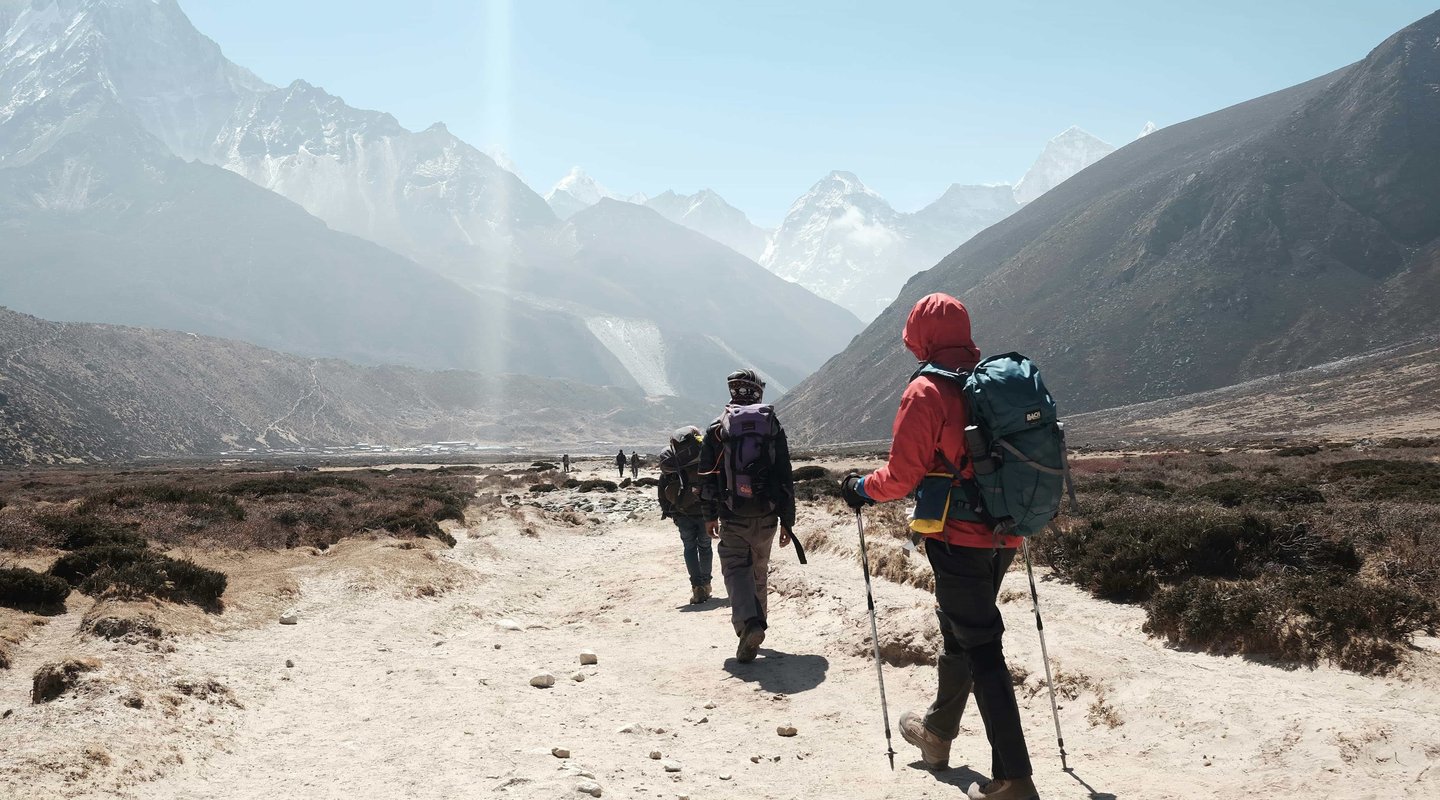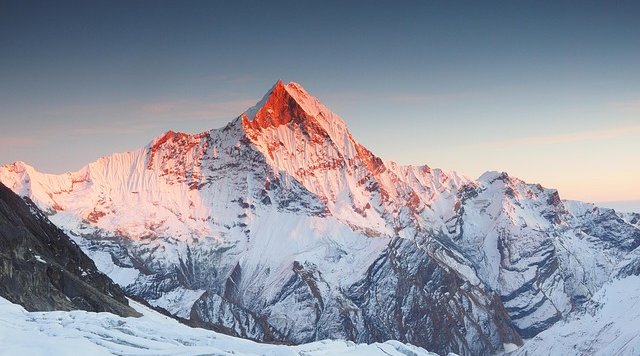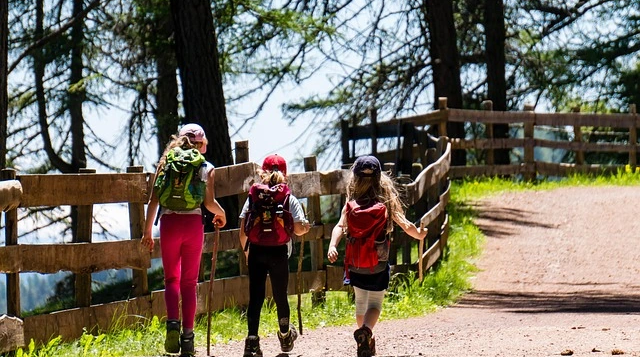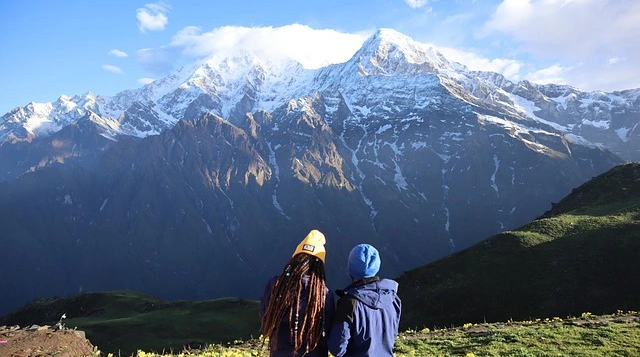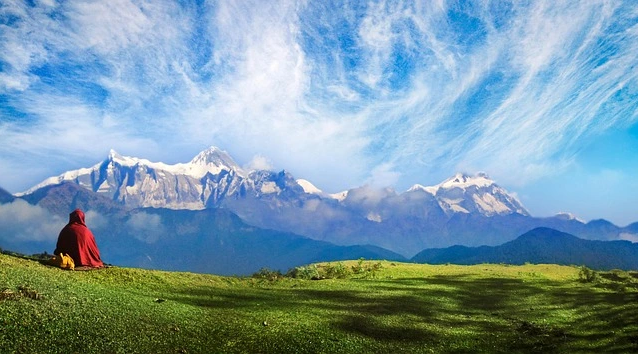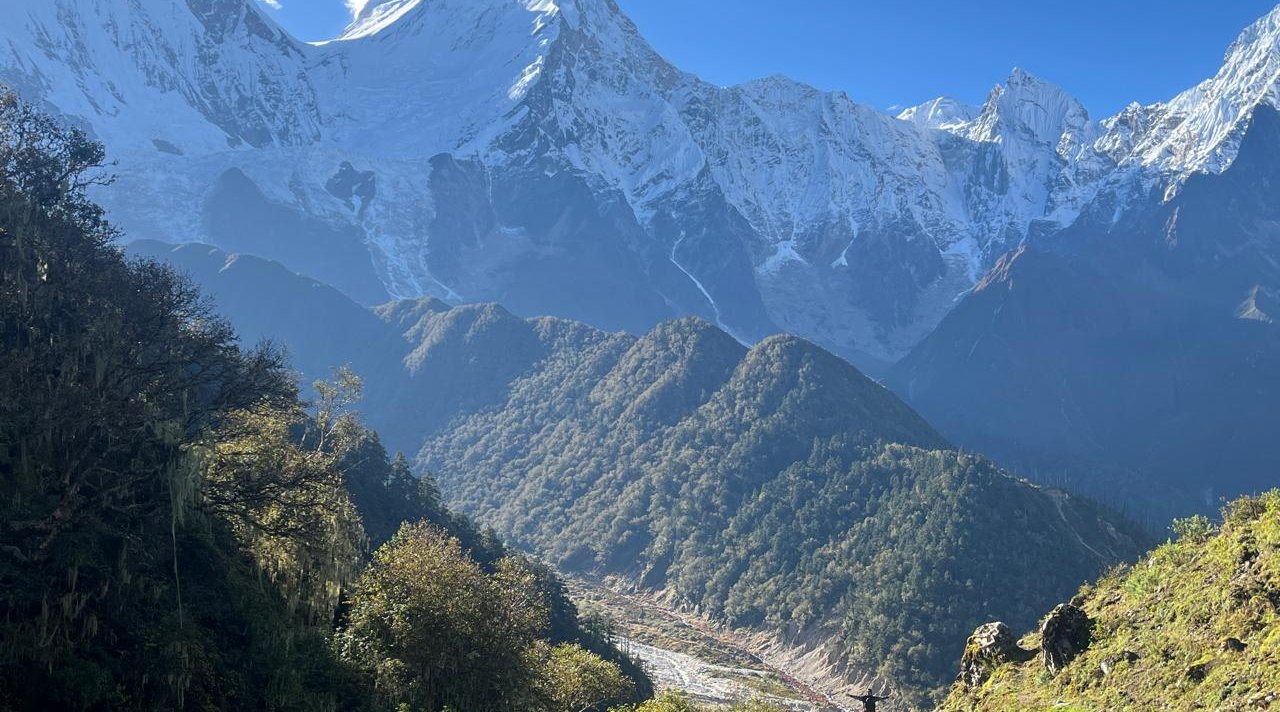Planning the best time to do the Everest 3 Pass trek can make the difference between a life-changing adventure and a weather-beaten struggle. After guiding hundreds of trekkers through Kongma La, Cho La, and Renjo La, I've learned that choosing the best time to do the Everest Three Pass trek dramatically impacts your success rate and overall experience.
Quick Answer — Best Months for the Everest 3 Pass Trek
The best time to do the Everest 3 Pass trek falls between March-May (spring) and September-November (autumn). October stands out as the single best month with crystal-clear skies and stable weather, whilst April offers warmer temperatures and rhododendron blooms.
Peak Season Winners:
- October: 90% clear days, perfect visibility, stable weather
- November: Crisp air, fewer crowds, excellent photography
- April: Comfortable temperatures, spring blooms, good weather
- March: Quieter trails, clear views, requires warm gear
- May: Warmest conditions, approaching monsoon, good visibility
Season-at-a-Glance:
- Spring (Mar-May): Clear mornings, warming temps, flowers bloom
- Autumn (Sep-Nov): Most stable weather, best visibility, peak season
- Winter (Dec-Feb): Extremely cold, snow-blocked passes, very quiet
- Monsoon (Jun-Aug): Daily rain, flight delays, challenging conditions
Everest 3 Pass Trek Season Overview
Nepal's four distinct trekking seasons each transform the Everest Three Pass trek into a completely different adventure. Understanding how weather patterns affect trail conditions, pass accessibility, and mountain visibility helps you choose your perfect trekking window.
The Himalayas create their own weather systems that change rapidly above 5,000 metres. Your trek crosses three high passes—Kongma La (5,535m), Cho La (5,420m), and Renjo La (5,360m)—where conditions can shift from sunshine to snowstorm within hours.
Weather Impact on Your Trek:
- Temperature swings from 20°C to -25°C depending on season
- Snowfall blocks passes December through February
- Monsoon clouds obscure mountain views June to August
- Wind speeds increase dramatically during winter months
- Afternoon weather patterns affect daily trekking schedules
Spring (March–May) — Popular & Blooming Season
Spring transforms the Everest region into a photographer's paradise with rhododendron forests exploding in pink, red, and white blooms below 4,000 metres. The weather stabilises after winter, creating excellent trekking conditions with temperatures ranging from -5°C at night to 15°C during sunny afternoons.
March kicks off the spring season with crisp, clear days and significantly fewer crowds than April or May. You'll need proper cold-weather gear as temperatures still drop to -15°C at high camps, but the trade-off is having the trails practically to yourself.
Spring Advantages:
- Rhododendron blooms create stunning landscapes
- Stable weather with minimal precipitation
- Everest climbing season adds excitement at base camp
- Clear mountain views, especially in mornings
- Warmer temperatures as season progresses
- Wildlife becomes more active after winter
Spring Challenges:
- Lingering snow on passes in March
- Increasing crowds through April-May
- Dust and haze can develop by late May
- Approaching monsoon brings afternoon clouds
- Higher accommodation prices in peak months
Autumn (September–November) — Best for Clear Skies
Autumn delivers the most reliable weather for the Everest Three Pass trek with post-monsoon clarity creating spectacular mountain views. September starts with occasional clouds clearing by mid-month, whilst October and November offer the year's best visibility.
The stable high-pressure systems dominating autumn create perfect trekking conditions. Temperatures remain comfortable for hiking—10°C to 15°C during the day at lower elevations—whilst nights cool to -10°C above 4,500 metres.
Why Autumn Dominates:
- Most stable weather patterns all year
- Crystal-clear mountain visibility
- Minimal precipitation (under 20mm monthly)
- Perfect photography conditions
- Festival season adds cultural experiences
- Predictable daily weather patterns
Autumn Considerations:
- Peak season crowds, especially October
- Fully booked tea houses require advance planning
- Higher prices for everything
- Competitive permit queues in Lukla
- Popular passes can feel congested
Winter (December–February) — Quiet but Harsh
Winter transforms the Three Passes into a serious mountaineering challenge with temperatures plummeting to -30°C at high camps. Heavy snowfall frequently blocks the passes, making this season suitable only for experienced cold-weather trekkers with flexible schedules.
December offers a brief window of stable weather before January's harsh conditions arrive. If you're prepared for extreme cold and potential route changes, winter rewards with solitude and pristine snow-covered landscapes.
Winter Reality Check:
- Night temperatures drop to -25°C to -30°C
- Heavy snow blocks passes for days
- Limited tea house operations above 4,500m
- Shortened daylight hours (dark by 5 PM)
- Many lodges close or operate minimally
- Essential gear: expedition-weight sleeping bags
Who Should Consider Winter:
- Experienced high-altitude trekkers
- Those seeking complete solitude
- Photographers wanting snow landscapes
- Flexible schedules for weather delays
- Comfortable with extreme conditions
Summer/Monsoon (June–August) — Challenging Conditions
Monsoon season brings daily rainfall to the Everest region, creating challenging trekking conditions with slippery trails and limited mountain views. Whilst possible, summer trekking requires waterproof everything and zen-like patience for weather delays.
The rain typically arrives mid-afternoon, allowing morning trekking in relatively clear conditions. Lower valleys become lush and green, but persistent cloud cover obscures the high peaks you've come to see.
Monsoon Challenges:
- Daily afternoon rainfall
- Lukla flights cancelled frequently (50% reliability)
- Muddy, leech-infested lower trails
- Mountain views obscured by clouds
- Slippery conditions on passes
- Limited photography opportunities
Monsoon Silver Linings:
- Dramatic cloud formations
- Lush, green valleys
- Very few trekkers (70% fewer)
- Lower accommodation prices
- Authentic village experiences
- Wildflowers in full bloom
Month-by-Month Breakdown (March–November)
Understanding monthly variations helps pinpoint your ideal trekking dates. Each month offers unique conditions affecting everything from pass accessibility to photography opportunities.
March — Early Spring Awakening
Winter's grip loosens but nights remain bitterly cold at -15°C. Clear skies dominate with minimal precipitation, though passes retain snow requiring crampons.
March Specifics:
- Day temps: 5°C to 10°C
- Night temps: -10°C to -15°C
- Rainfall: 15-20mm
- Lukla reliability: 75%
- Trail condition: Snow above 4,500m
- Visibility: Excellent
- Crowd level: Low-moderate
April — Spring Perfection
Rhododendrons reach peak bloom whilst temperatures become comfortable. This popular month balances good weather with increasing crowds.
April Details:
- Day temps: 10°C to 15°C
- Night temps: -5°C to -10°C
- Rainfall: 25-30mm
- Lukla reliability: 80%
- Trail condition: Generally clear
- Visibility: Very good
- Crowd level: High
May — Pre-Monsoon Warmth
The warmest trekking month before monsoon arrives. Afternoon clouds may develop, but mornings remain clear for pass crossings.
May Conditions:
- Day temps: 15°C to 20°C
- Night temps: 0°C to -5°C
- Rainfall: 40-50mm
- Lukla reliability: 75%
- Trail condition: Dry and dusty
- Visibility: Good mornings, cloudy afternoons
- Crowd level: Moderate-high
September — Monsoon Transition
Early September sees lingering monsoon clouds clearing by mid-month. Patient trekkers enjoy freshly washed mountain views and green valleys.
September Features:
- Day temps: 12°C to 17°C
- Night temps: -3°C to -8°C
- Rainfall: 30-40mm (early month)
- Lukla reliability: 70%
- Trail condition: Drying out
- Visibility: Improving daily
- Crowd level: Moderate
October — Peak Perfection
October delivers everything trekkers dream about—stable weather, crystal-clear views, and comfortable temperatures. Book early as accommodation fills quickly.
October Optimum:
- Day temps: 10°C to 15°C
- Night temps: -5°C to -10°C
- Rainfall: 10-15mm
- Lukla reliability: 85%
- Trail condition: Perfect
- Visibility: Outstanding
- Crowd level: Very high
November — Crisp and Clear
Post-festival season brings crisp air and spectacular visibility. Colder temperatures thin the crowds whilst maintaining excellent trekking conditions.
November Notes:
- Day temps: 5°C to 12°C
- Night temps: -10°C to -15°C
- Rainfall: 5-10mm
- Lukla reliability: 80%
- Trail condition: Excellent
- Visibility: Crystal clear
- Crowd level: Moderate-high
How Weather Affects Difficulty & Safety
Weather dramatically impacts the technical difficulty of crossing Renjo La, Kongma La, and Cho La passes. Understanding seasonal variations helps you prepare appropriate gear and adjust expectations.
Snow accumulation transforms straightforward pass crossings into technical climbs requiring crampons and potentially ropes. Ice formation on Cho La's glacier section becomes particularly treacherous during spring melt cycles.
Pass Conditions by Season:
Spring Pass Challenges:
- Lingering snow requires crampons (March-April)
- Afternoon snow softens creating postholing
- Avalanche risk during rapid warming
- Route finding difficult in fresh snow
- Early starts essential for stable conditions
Autumn Pass Advantages:
- Minimal snow coverage
- Stable trail conditions
- Clear route marking
- Microspikes usually sufficient
- Longer weather windows for crossing
Winter Pass Warnings:
- Deep snow blocks normal routes
- Full mountaineering gear required
- Extreme wind chill above 5,000m
- Limited rescue options
- Some passes completely impassable
Altitude Sickness Considerations by Season
Seasonal weather patterns affect acclimatisation and altitude sickness risks. Cold temperatures increase energy expenditure whilst dehydration becomes problematic in dry winter air.
Spring and autumn offer optimal acclimatisation conditions with moderate temperatures. Winter's extreme cold stresses the body additionally, whilst monsoon humidity can mask dehydration symptoms.
Seasonal Altitude Factors:
- Winter increases caloric needs by 30%
- Monsoon masks dehydration symptoms
- Spring/autumn provide ideal adaptation conditions
- Cold air holds less oxygen, intensifying altitude effects
- Rapid weather changes stress the body's adaptation
Best Time for Photography & Mountain Views
Photography enthusiasts should prioritise October and November for unparalleled mountain clarity. Post-monsoon atmospheric washing creates visibility extending beyond 100 kilometres on clear days.
Golden hour magic happens daily during autumn with Everest glowing pink during sunrise from Kala Patthar. The low-angle winter sun creates dramatic shadows and alpenglow lasting longer than other seasons.
Photography Season Rankings:
October-November Excellence:
- 90% clear mornings guaranteed
- Dramatic cloud formations at sunset
- Snow-dusted peaks without trail obstacles
- Perfect visibility for panoramic shots
- Stable weather for sunrise missions
March-April Advantages:
- Rhododendron foregrounds
- Fresh snow creating pristine peaks
- Fewer trekkers in frame
- Excellent morning clarity
- Spring light quality
Challenging Photography Seasons:
- Monsoon: 80% cloudy/rainy days
- Winter: Limited daylight hours
- Late May: Increasing haze
- Early September: Clearing clouds
Best Time for Flights & Logistics
Lukla flight reliability varies dramatically by season, affecting your entire trek schedule. Understanding seasonal patterns helps build appropriate buffer days and backup plans.
Autumn offers the most reliable flight operations with 85% on-time performance in October. Spring sees moderate reliability whilst monsoon creates chaos with multi-day delays common.
Flight Reliability by Season:
Peak Season Operations (Oct-Nov, Mar-Apr):
- 80-85% on-time performance
- Multiple daily flights available
- Helicopter backup options
- Ramechhap alternative during congestion
- Book flights 2-3 months advance
Off-Season Challenges:
- Monsoon: 50% cancellation rate
- Winter: Weather-dependent daily
- Limited flight frequency
- Fewer helicopter options
- Flexible schedule essential
Permit Office Considerations:
- Peak season queues in Lukla/Monjo
- Winter reduced hours
- Festival closures affect processing
- Online permits save time
- Carry exact change for fees
Packing & Gear by Season
Seasonal gear requirements vary significantly from spring's moderate needs to winter's expedition-level equipment. Proper gear selection ensures comfort and safety across the Three Passes.
Spring and autumn require standard four-season trekking gear with good layering options. Winter demands expedition-weight everything whilst monsoon prioritises waterproofing over warmth.
Spring/Autumn Essentials:
- Sleeping bag rated -15°C
- 3-layer clothing system
- Light down jacket (600+ fill)
- Waterproof shell jacket/pants
- Microspikes or light crampons
- Standard trekking boots
Winter Gear Upgrades:
- Sleeping bag rated -25°C or lower
- Expedition down jacket (800+ fill)
- Insulated mountaineering boots
- Full crampons mandatory
- Balaclava and double gloves
- Hand/toe warmers supply
Monsoon Modifications:
- Waterproof everything twice
- Pack liner plus dry bags
- Quick-dry clothing
- Umbrella for lower elevations
- Extra socks (feet always wet)
- Anti-leech measures
Choosing Your Season Based on Priorities
Different trekker profiles suit different seasons. Understanding your priorities helps select the optimal time for your Everest Three Pass adventure.
Budget travellers benefit from off-season discounts whilst photographers need autumn's clarity. Adventure seekers might embrace winter's challenges whereas social trekkers prefer peak season energy.
Season Selection by Priority:
Budget Travellers (Dec-Feb, Jun-Aug):
- 20-30% accommodation discounts
- Cheaper flight options
- Negotiable guide/porter rates
- Less competition for services
- Accept weather compromises
Photography Focus (Oct-Nov, March):
- Maximum mountain visibility
- Dramatic light conditions
- Snow-enhanced landscapes
- Minimal atmospheric haze
- Stable sunrise/sunset opportunities
Solitude Seekers (Dec-Feb, June-July):
- Minimal trail traffic
- Authentic village experiences
- Peaceful tea houses
- Undisturbed natural sounds
- Personal mountain moments
Social Trekkers (April, October):
- Maximum trekker interaction
- Full tea houses create atmosphere
- Group dynamics on trails
- Shared experiences at passes
- Festival season cultural events
FAQs About the Best Time for the Everest 3 Pass Trek
What is the best month to do the Everest Three Pass trek?
October emerges as the single best month combining stable weather, crystal-clear mountain views, and comfortable temperatures. However, it's also the busiest and most expensive month.
Can you trek the 3 passes in winter?
Yes, but only experienced trekkers should attempt winter crossings. Heavy snow often blocks passes completely, temperatures drop to -30°C, and you'll need expedition-grade gear.
Is October better than November for clear views?
Both offer exceptional visibility, but November typically provides clearer views due to colder, crisper air. October has slightly warmer temperatures making it more comfortable overall.
Which season has fewer crowds on the Everest 3 Pass trek?
Winter (December-February) and monsoon (June-August) see 70% fewer trekkers. March and late November offer good compromise between weather and crowds.
How does monsoon affect Lukla flights?
Monsoon reduces flight reliability to 50% with multi-day delays common. Always budget 3-4 extra days during monsoon season for potential flight cancellations.
Is spring or autumn better for the Everest Three Pass trek?
Autumn (September-November) offers more stable weather and better visibility. Spring (March-May) provides warmer temperatures and rhododendron blooms but slightly less predictable conditions.
What month has the best temperature for trekking?
May offers the warmest temperatures before monsoon, whilst October provides the best balance of comfortable temperatures and stable weather.
When is there snow on the Three Passes?
Snow typically covers passes December through March, with lingering snow possible until mid-April. Autumn passes usually remain snow-free except after unusual storms.
Can beginners do the 3 passes in any season?
Beginners should stick to October-November or April-May for optimal conditions. Winter and monsoon require experience dealing with challenging mountain weather.
What's the cheapest time to trek the Three Passes?
Winter and monsoon offer 20-30% discounts on accommodation and services, but weather challenges may increase other costs like extended stays and gear upgrades.
When are tea houses fully open on the route?
All tea houses operate March through November. Some high-altitude lodges close or limit services December through February.
Which season requires crampons for the passes?
Winter always requires crampons, March-April usually needs them, whilst October-November typically only requires microspikes for Cho La Pass.
Conclusion — Choosing the Right Season for You
The best time to do the Everest 3 Pass trek ultimately depends on your priorities, experience level, and tolerance for crowds versus weather challenges. October and November deliver the most reliable conditions, but don't dismiss the unique rewards of shoulder seasons.
Ready to conquer the Three Passes? Check our detailed Everest 3 Pass trek packages and start planning your Himalayan adventure today.

